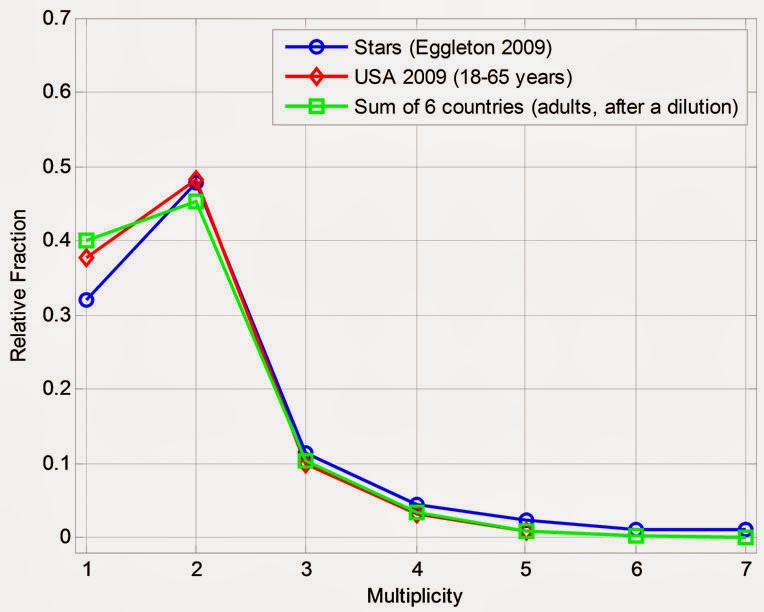 United States Patent
United States Patent
Publication number US8466361 B1
Application number US 13/554,713
Publication date Jun 18, 2013
Charles Adams Eaton
Corrales, NM
Claims
The invention claimed is:
1. A musical instrument played by blowing air in a first end in the manner of an Australian Aboriginal Didgeridoo, the musical instrument comprising: a body comprising two or more un-tapered venture cylinder segments that can be nested or telescoped for portability; wherein each segment closer to a second end of the musical instrument, opposite the first end, has a diameter smaller than a diameter of any preceding segment closer to the first end.
2. The instrument of claim 1, further comprising: terminal sections of various lengths to provide different fundamental frequencies.
[...]
UTILIZATIONS
The “Walkabout Didgerido”
The 48″ Venturi-Didgeridoo, when made of fiberglass and resin, weighs only 9 ounces. If the rubber tip for a cane is inserted into the distal opening (FIG. 2) and a cap with a strap is put over the proximal opening (FIG. 3), it is converted into a walking stick—or “Walkabout Didgeridoo”. If the base of the cap is drilled and tapped, a properly threaded bolt will convert the “Walkabout Didgeridoo” into a monopod for camera stabilization (FIG. 3).
http://patft.uspto.gov/netacgi/nph-Parser?Sect2=PTO1&Sect2=HITOFF&p=1&u=/netahtml/PTO/search-bool.html&r=1&f=G&l=50&d=PALL&RefSrch=yes&Query=PN/8466361
Tuesday, 18 June 2013
Venturi didgeridoo






Saturday, 1 June 2013
An Intriguing Correlation between the Distribution of Star Multiples and Human Adults in Household
 International Journal of Astronomy and Astrophysics
International Journal of Astronomy and Astrophysics
Vol. 3 No. 2, June 2013, pp. 153-160
DOI: 10.4236/ijaa.2013.32017
Alon Retter
Hamaccabim St., Shoham, Israel
Abstract
It is a known fact that like people, some stars are singles, many others tend to couple in binaries, and fewer are in triples etc. The distribution of multiplicity in the 4559 brightest nearby stars was matched with that of human adults in household in six countries, in which this information could be dug and estimated. A strong resemblance between the two curves is evident. Monte Carlo simulations suggest that this result is significant at a confidence level higher than 98%. Apparently, there should be no connection between the two populations, thus this striking result may supply some clues about the way Nature works. It is noted that extended versions of this work were proposed three years ago, and two predictions of this absurd model have already been verified.
http://www.scirp.org/journal/PaperInformation.aspx?PaperID=32738
http://file.scirp.org/Html/10-4500123_32738.htm






The Geriatric Clinic: Dry and Limp: Aging Queers, Zombies, and Sexual Reanimation
 Journal of Medical Humanities
Journal of Medical Humanities
June 2013, Volume 34, Issue 2, pp 261-268
2013-06-01
DOI 10.1007/s10912-013-9226-8
Shaka McGlotten, Lisa Jean Moore
Purchase College, SUNY, Purchase, NY, USA
Abstract
This essay looks to the omission of aging queer bodies from new medical technologies of sex. We extend the Foucauldian space of the clinic to the mediascape, a space not only of representations but where the imagination is conditioned and different worlds dreamed into being. We specifically examine the relationship between aging queers and the marketing of technologies of sexual function. We highlight the ways queers are excluded from the spaces of the clinic, specifically the heternormative sexual scripts that organize biomedical care. Finally, using recent zombie theory, we gesture toward both the constraints and possibilities of queer inclusion within the discourses and practices that aim to reanimate sexual function. We suggest that zombies usefully frame extant articulations of aging queers with sex and the dangerous lure of medical treatments that promise revitalized, but normative, sexual function at the cost of other, perhaps queerer intimacies.
http://link.springer.com/article/10.1007%2Fs10912-013-9226-8






Psychological phenomena in dead people: Post- traumatic stress disorder in murdered people and its consequences to public health
 Australian Journal of Parapsychology
Australian Journal of Parapsychology
Vol. 13, No. 1, Jun 2013: 37-56
de Almeida Ferreira, Wasney
Faculdade de Medicina (FM), Universidade Federal de Minas Gerais (UFMG), Belo Horizonte, Minas Gerais, Brazil
Abstract: The aims of this paper are to narrate and analyze some psychological phenomena that I have perceived in dead people, including evidence of post-traumatic stress disorder (PTSD) in murdered people. The methodology adopted was "projection of consciousness" (i.e., a non-ordinary state of consciousness), which allowed me to observe, interact, and interview dead people directly as a social psychologist. This investigation was based on Cartesian skepticism, which allowed me a more critical analysis of my experiences during projection of consciousness. There is strong evidence that a dead person: (i) continues living, thinking, behaving after death as if he/she still has his/her body because consciousness continues in an embodied state as 'postmortem embodied experiences'; (ii) may not realize for a considerable time that he/she is already dead since consciousness continues to be embodied after death (i.e., 'postmortem perturbation' - the duration of this perturbation can vary from person to person, in principle according to the type of death, and the level of conformation), and (iii) does not like to talk, remember, and/or explain things related to his/her own death because there is evidence that many events related to death are repressed in his/her unconscious ('postmortem cognitive repression'). In addition, there is evidence that dying can be very traumatic to consciousness, especially to the murdered, and PTSD may even develop.
http://search.informit.com.au/documentSummary;dn=406555355897542;res=IELHSS





